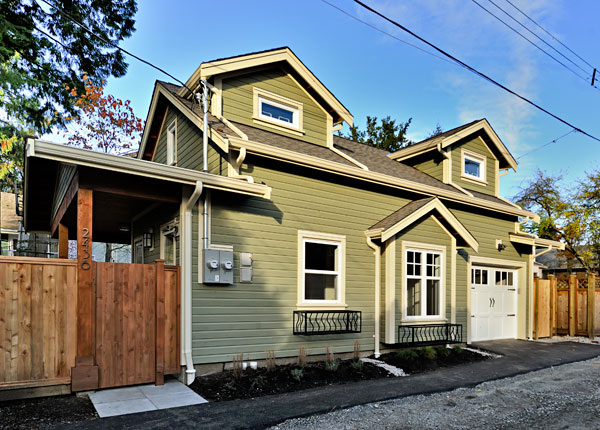Got a old phone sitting around collecting dust?
There was a feature on the news tonight that caught my attention because it was related to what we learned in class as well as to my previous post. It was basically saying that due to planned and perceived obsolescence it has become the norm to replace our cell phones every two years or so. They interviewed people on the streets of Vancouver and it’s alarming the fact that most of them have already gone through five to fifteen cell phones.
The point – apart from the need to completely reform consumer mentality – is that rather than letting these perfectly functioning phones waste away in the depths of our drawers we can donate them! There are local non-profit organizations who have started initiatives like Phones for Fearless where you can donate your old phones to residents of the impoverished downtown eastside neighbourhood.
What ever happened to that old chunky computer?
After reading my classmate’s post, E-Waste: Who’s Responsible, I was reminded of a documentary I watched a couple years ago that was made by a group of graduate students at UBC’s School of Journalism. The film is called Ghana: Digital Dumping Ground and it’s an investigative news documentary that explores the health and environmental impacts of electronic waste.

This was an eye-opener for me, to be honest, prior to watching this I had never thought about what happened to our old electronics. I think it’s great that large companies like Samsung are starting to take action – with the Samsung Recycling Direct program consumers now have a simple and safe way of disposing electronic waste. There are also local organizations such as Free Geek Vancouver who will gladly take in unwanted electronics for reuse or recycling.
Can fast fashion be ethical?
 In the past few years, the multinational retail clothing company H&M started integrating sustainability into its long term business strategy. Last week, the company released its 2012 Sustainability Report. The major highlights of 2012 include:
In the past few years, the multinational retail clothing company H&M started integrating sustainability into its long term business strategy. Last week, the company released its 2012 Sustainability Report. The major highlights of 2012 include:
1. One of the first and largest fashion companies to make its supplier factory list public.
2. First clothing retailer to create a global system for recycling old clothing.
3. The number one user of organic cotton.
4. Raised support for higher wages and yearly wage reviews for garment workers in Bangladesh.
5. Launched a global water stewardship program in partner with WWF – taking the whole supply chain into account.
While these actions are admirable, H&M is still the second largest clothing retailer in the world selling more than 550 million garments each year. Currently there are 2,500 stores worldwide and the plan is to increase the number by 10-15% each year. The average monthly wage of a factory worker in Bangladesh is $43 which is the lowest in the world. Let’s face it, these fast fashion retail giants are largely responsible for the many environmental and social issues we face today.
What I’d much rather see is quality clothing that’s made to last so that they can decrease the amount of clothing being manufactured and in turn change customers’ habit of overconsumption. Nonetheless, I think H&M is heading in the right direction and I look forward to what they have in store.
Comparing social smoking to public farting

Well it’s true that I fart, but I wouldn’t call myself a farter. I’m a social farter. I really only do it when I’m out with my friends who fart.
The above is one of three videos recently released by Ontario’s Ministry of Health as part of a public awareness campaign to counter social smoking. This campaign, Quit the Denial, is meant to target young smokers between the ages of 18 and 29 who only smoke when they’re with their friends or in social situations. The ads are basically trying to convey that social smoking is just as ridiculous as publicly farting, picking ear wax, and nibbling.
The Social Nibbler has received 23,091 in the past three weeks, the Social Farter with 558,916 in the past two weeks, and the Social Ear Picker with 9,252 in the past week. So far, the campaign has received mostly positive reactions. I do agree that social smoking is an extraordinary illogical concept and I’m glad to see the Ministry of Health addressing such issues; however, despite the fact that these ads have well-intended purposes, other than getting a few chuckles out of its viewers I don’t think this campaign will have much impact. After watching the first clip, I clicked into the second one and was bored within 4 seconds. A major flaw in these videos is that they’re just repeats of the same thing rather than complements to one another.
Do you think this campaign will last/make an impact?
BC Hydro’s bus shelter ad
Have you been to Robson St. as of late? If not, take a look at their recent installation promoting LED light bulbs to save energy.
West House Project: The zero energy house
Adding on to my previous post, many of you may recall seeing the West House in LiveCity Yaletown during the Vancouver 2010 Olympics. The West House was a collaborative project between Smallworks Studios, SFU, and the government to create a zero energy house – meaning it produces as much energy as it consumes in a year!

Laneway housing: A creative use an of an urban backyard
“Since when did they start building two floored garages?” I thought to myself as I passed by what looked like a miniature housing unit being constructed behind a main residence. I took a closer look and there was in fact a kitchen, a living space, and stairs to the upper floor. This, apparently, is called a laneway house (LWH).
Having come from the suburbs, this idea of laneway housing was completely foreign to me. For those of you who are also unfamiliar with LWHs, they‘re basically small houses and the back of a lot near the lane that includes both a dwelling unit and parking space. A single family home can now have a laneway house in addition to the secondary suite in the main house; however, laneway houses are only permitted in certain single family areas in Vancouver at the moment. Furthermore, owners are allowed to put these homes up for rent. For additional information, download the City of Vancouver’s Laneway Housing How-To-Guide.
Sustainable benefits of LWHs include:
1. Affordability: LWHs costs approximately $250,000 to $350,000 to build and they increase diversity in housing choices.
2. Size: The maximum size of a LWH is approximately 750 square feet; thus, it’s cleverly compact and maximizes the use of space. The size greatly impacts the home’s energy use and sustainability. Smaller homes conserve significant resources in their construction, maintenance, and operation. Additionally, LWH make use of existing municipal infrastructure – getting more people in while maintaining environment.
3. Construction process: Factory prefabrication allows reduction in construction waste and reduces site disturbance. It takes 16-18 weeks to build.
4. Lane enhancement & social sustainability: LWHs make lanes greener, more livable, and safer by providing living space and planting where regulations otherwise permit garage and paving. Regulations and design guidelines ensure that LWHs: maintain backyard open space and stay as close to garage form as possible to limit impact on neighbours. LWH complies with the Green Home Program.
5. Landscape design: Vertical planting is required along the edge of the lane as well as permeable surfacing for parking. Green roofs, walls, and planting of deciduous trees are encouraged. Lighting in the back lanes help make the lane a safe and welcoming to pedestrians.
6. Shorter commute: Closer to transit stops, stores, schools, and workplaces.
Personally, I think this is a great and innovative way of altering our current surroundings to improve sustainability, affordability, and livability. However, there are groups who are strongly against this movement – their main arguments include the impact on privacy, concerns from neighbouring properties not being considered by planning departments, increased shading of neighbours’ backyard, and increased noise levels. What’s your say?
Vancouver’s bike-share program postponed to 2014
Biking sharing is essentially a transportation program where users can pick up a bicycle at any self-serve bike station and return it at any bike station in the area. Some major benefits of public bikeshare include easing traffic congestion, helping short-trip travellers avoid busy routes, creating safer streets, and enhancing the overall transit experience. To give you a better understanding of how it works, I’ve included a short video here of Toronto’s successful bike sharing program, Bixi.

Of all cities, it’s hard to believe that Vancouver hasn’t yet implemented a bike sharing program.The project has been in the works since 2008, and the long-awaited launch date was finally revealed last year to be Spring 2013. However, through a recent interview conducted by Vancouver Magazine with the city’s transportation director, Jerry Dobrovolny, it was revealed that some portions of the program won’t be complete until the end of this year. The cause of this delay has little to do with the city’s topography, weather, or infrastructure, but instead it’s to do with the province’s adult helmet law. Bummer.
Anyway, I’m really looking forward to the launch of this new program, but from the sounds of it it won’t be out until around this time next year. In the meantime, maybe there’s something that we can do to give this project a little push to get the cyclists on the road. Any ideas?
Thinking outside the bottle
Once upon a time fountains of cool, refreshing, and safe drinking water were available everywhere in schools, offices, gyms, and department stores across the country. This once free and abundant resource has now been replaced by the creation of evil corporations in the form of bottled water.
I hate to break it to you but this glorified product is no more than a simple repackaging of your local tap water sold to you for a generous price (a litre of tap water costs more than a litre of gasoline). Popular brands such as Dasani and Aquafina have admitted that their water originates from public sources but they are not required to include this in their label. Bottled water is mistakenly conceived to be cleaner and safer to drink than tap water; however, municipal water sources are inspected on a daily basis whereas bottled water every once a week. And as Canadians, we are lucky to be enjoying 9% of the world’s renewable water resource, but if you are still concerned about the cleanliness of your tap water, you can always boil the water and put it through a purifier when it’s cooled.
Some other major criticism about bottled water is that they add plastic to landfills and use far too much energy in production. Did you know that it takes 3L of water to produce 1L of bottled water, and the total amount of energy required for every bottle is equal to filling a plastic bottle ¼ full with oil. Is this convenience worth the environmental impact? If you’re interested in learning more about the bottles water industry or about the importance of this resource I recommend checking out the documentary Tapped.

I know it all sounds pretty horrible, but don’t fret! If you’re concerned about this issue there’s something that you can do right here on campus. In the past year, a group of UBC students, faculty, and staff came together in creating Tap That – a campaign of water alternatives – you can sign their petition here for a bottled water free UBC!




